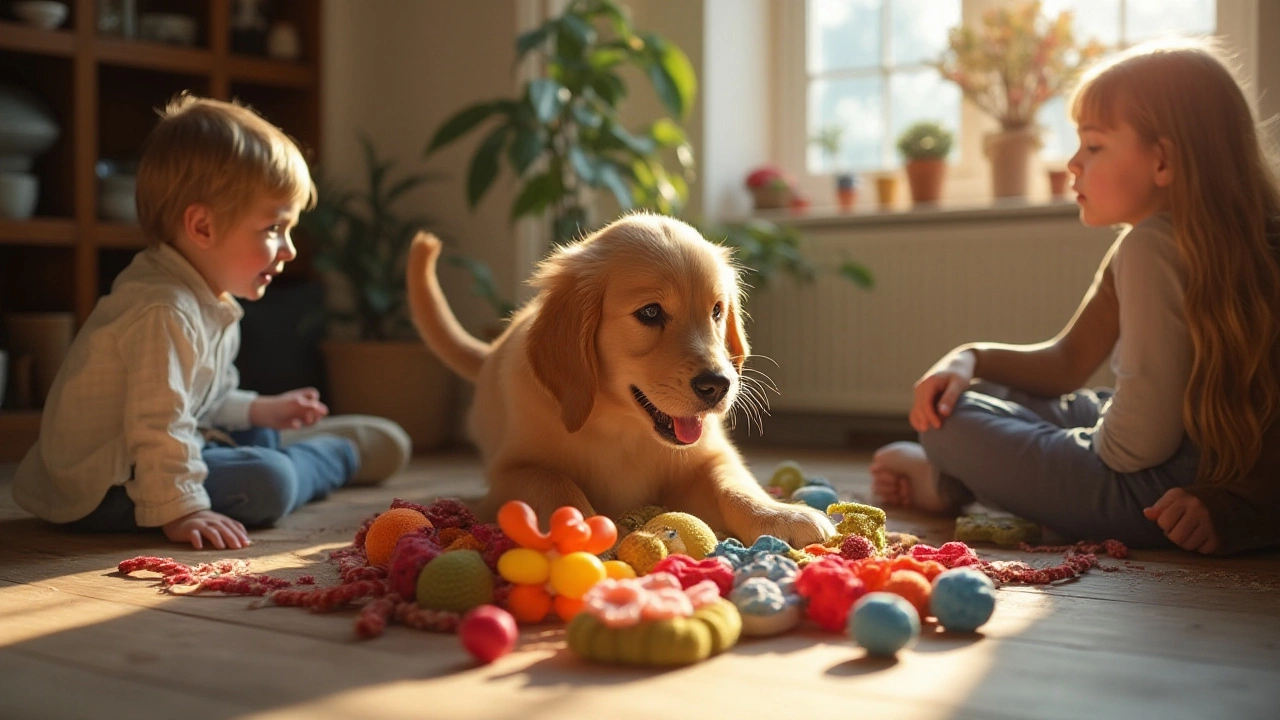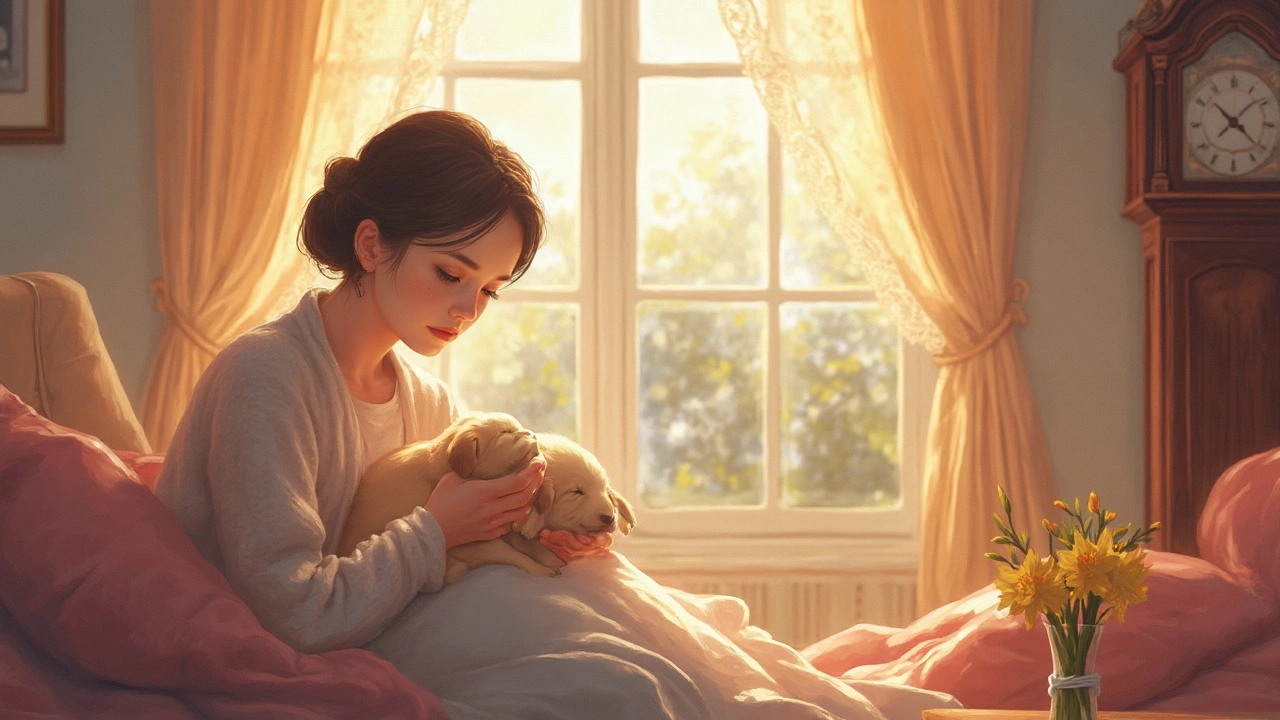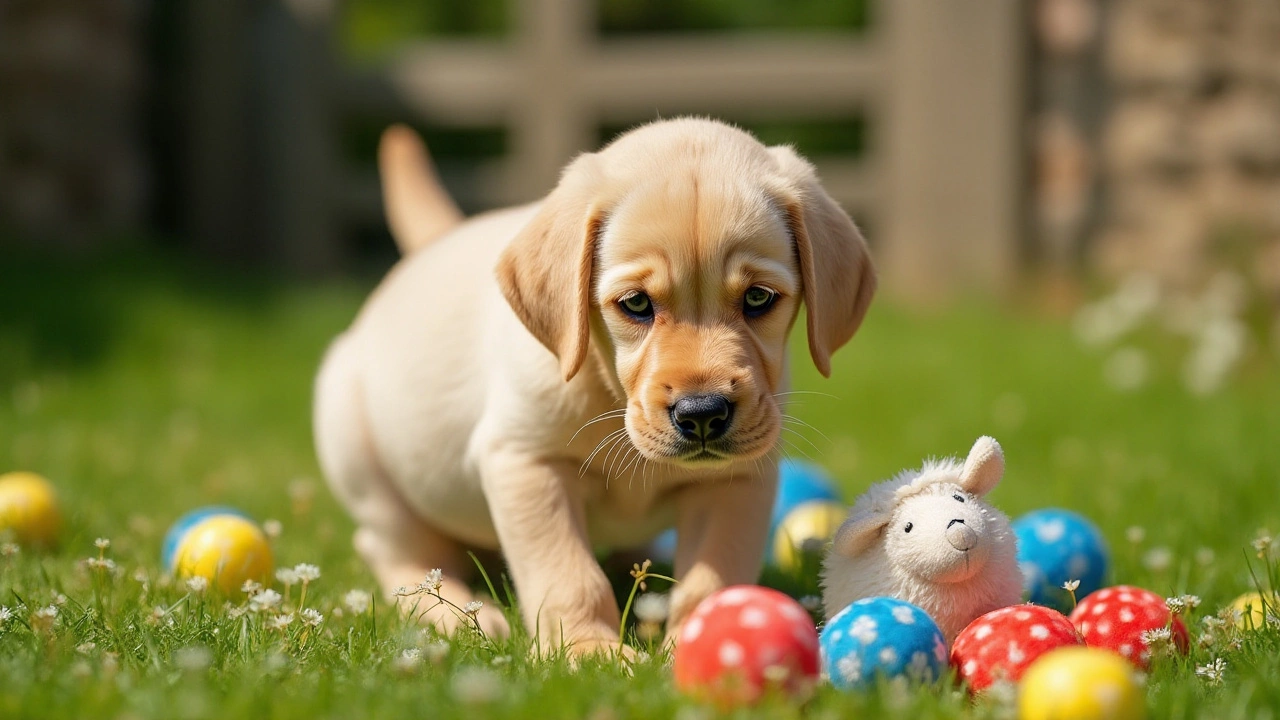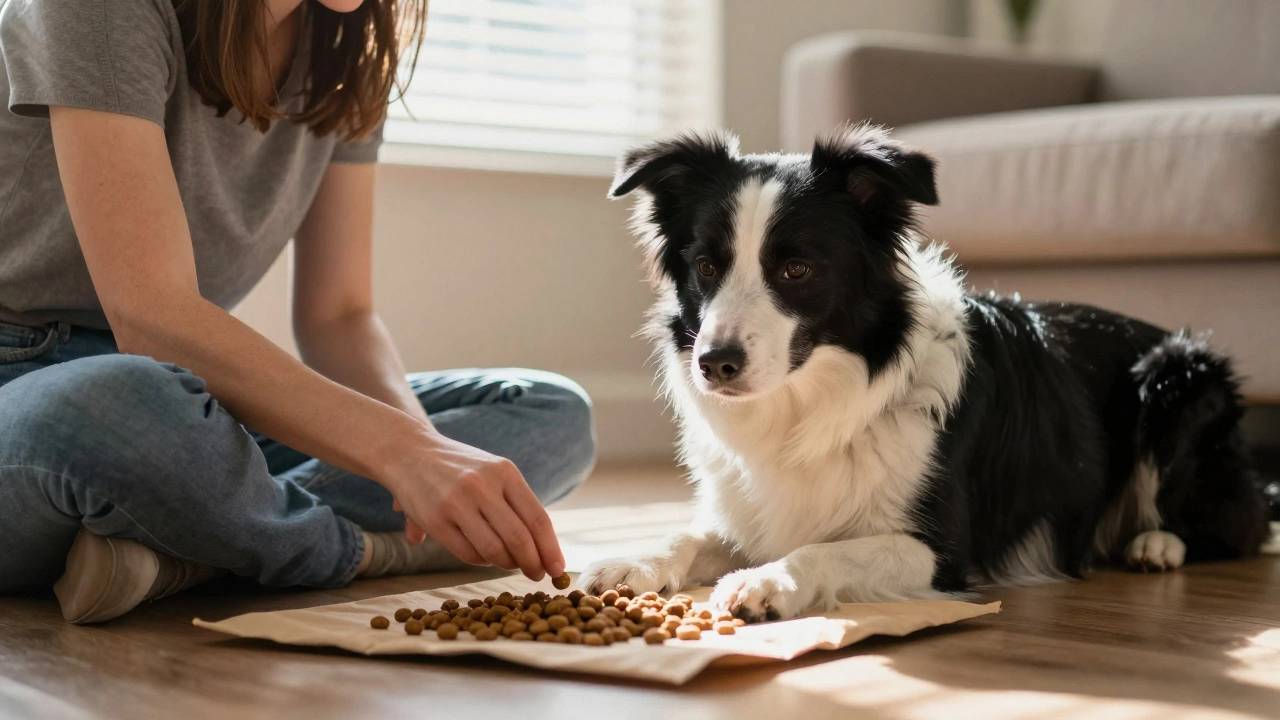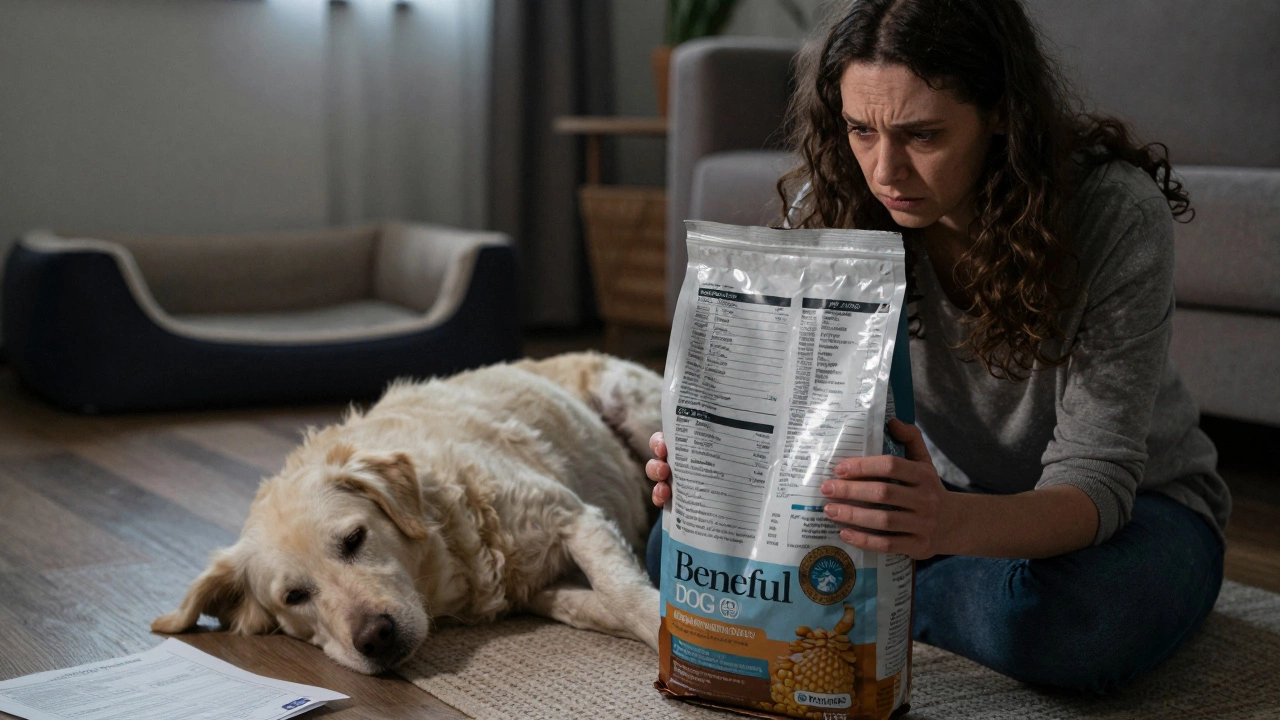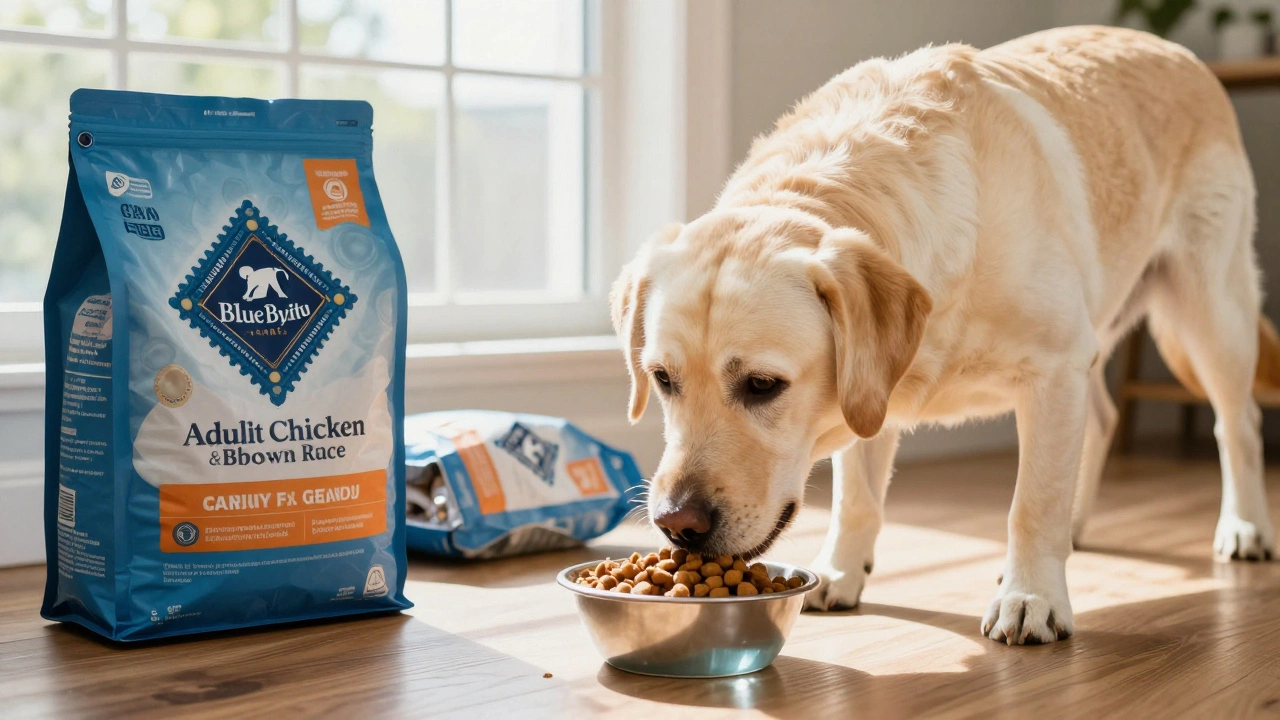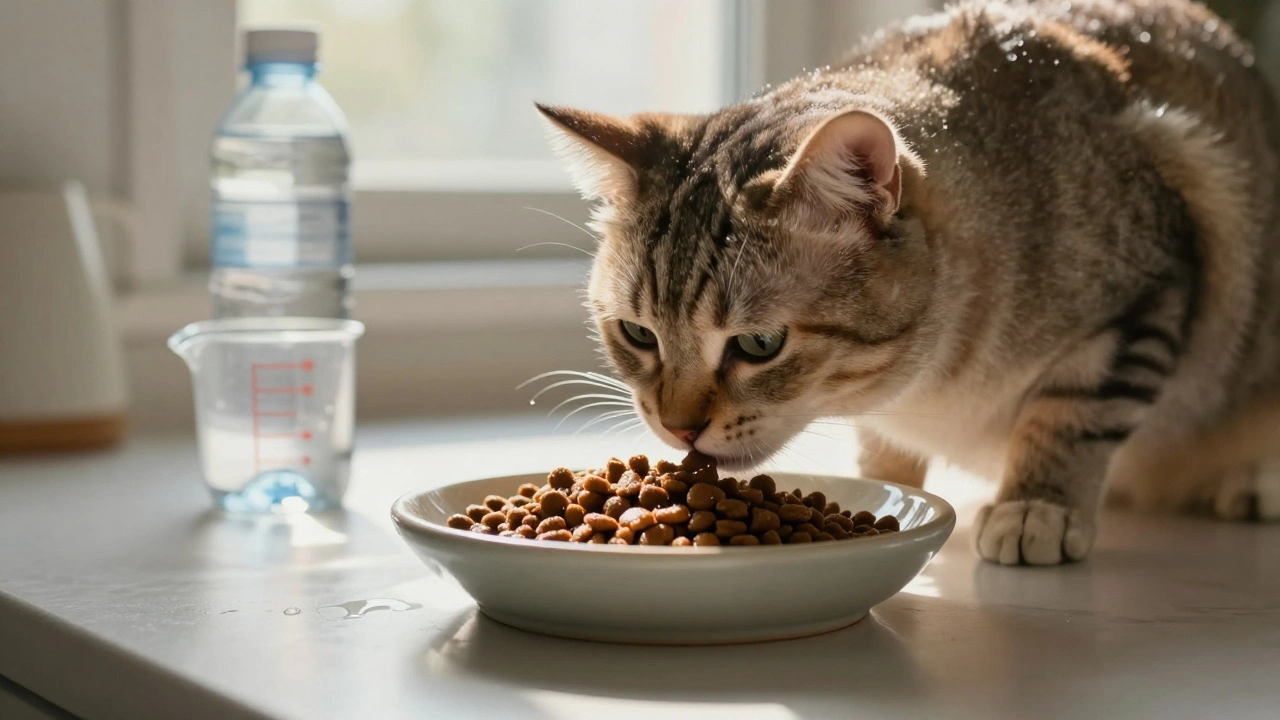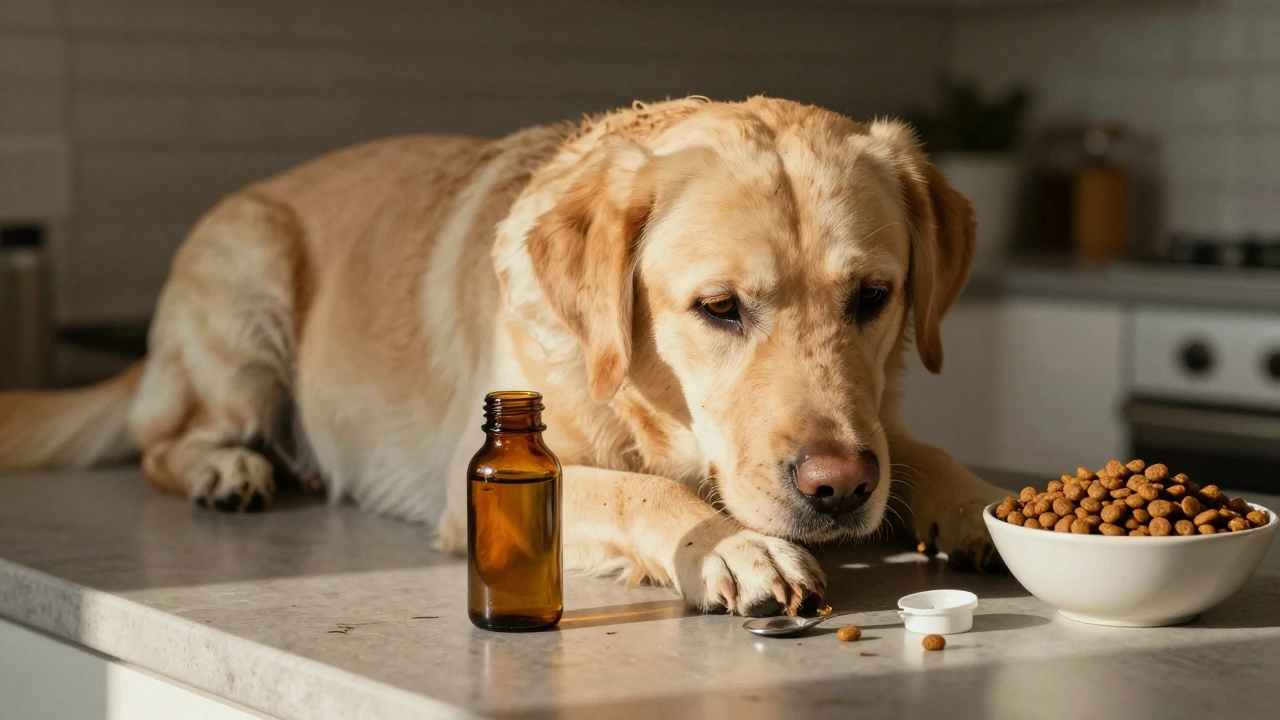Bringing a new puppy home is an adventure filled with boundless energy, sharp little teeth, and a lot of laughter. However, amidst the fun, there’s often a pressing question at the back of a new owner’s mind: when do puppies get easier?
Puppyhood is a time of rapid growth and change, both physically and mentally. It's vital to understand these phases to better manage and appreciate the experience fully. While every puppy is different, there are common stages where their behavior becomes more manageable.
About six months into their journey on this planet, you may notice a shift. Puppies often start to exhibit calmer behavior as they mature, though each breed and individual will have its timeline. Patience is key, and so is preparation. Equipping yourself with the right tools, like suitable toys, can make this phase less challenging and more enjoyable for both of you.
- Understanding Puppy Energy
- The Age Factor
- Behavioral Changes
- Choosing the Right Toys
- Training Techniques
- Creating a Calming Environment
Understanding Puppy Energy
Welcoming a puppy into your life means embracing a whirlwind of activity and vitality. From the moment those little paws step into your home, you'll become keenly aware of just how much energy these young creatures have. This boundless enthusiasm is not only adorable but also crucial for their development. Puppies use this energy to explore their world, learn new things, and socialize. During the first year of life, their curiosity and playfulness are at their peak, serving as a foundation for their behavior as adult dogs.
One of the driving forces behind a puppy's lively nature is their rapid growth rate. Much like children, puppies experience significant physical and cognitive changes in a short amount of time. This phase requires them to burn a lot of calories, hence their never-ending zest for action. It's also essential to note that different breeds have varying energy levels, influenced by their genetic predisposition and historical roles. For instance, working breeds such as Border Collies and Retrievers naturally display higher energy levels compared to more laid-back breeds like the Bulldog or Basset Hound.
Engaging a puppy in regular physical activities is vital for channeling their energy positively. Not only does it prevent them from developing unwanted habits, like chewing on furniture or digging through the bin, but it also promotes a healthy lifestyle. This is where the strategic use of puppy toys becomes essential. Toys designed for puppies not only entertain but also provide mental stimulation, catering to their innate needs to chew, chase, and solve puzzles. Interactive toys that dispense treats, for instance, can keep them occupied and mentally engaged for long periods.
"Puppies utilize play as a primary avenue for learning and development," states canine behaviorist Dr. Stanley Coren. "Through play, they learn social skills, gain confidence, and develop necessary survival instincts."
A strong understanding of a puppy's energy cycles throughout the day can also be beneficial. Many puppies exhibit bursts of energy often termed as 'zoomies' before settling down for a nap. Recognizing these patterns allows you to time activities and rest periods effectively, nurturing a balanced routine. As they grow, the duration of these energy bursts changes, and adjusting their playtime accordingly is important.
Managing Energy Levels with Routine
Creating a structured routine can significantly help manage a puppy's energy. Consistent mealtimes followed by play and rest periods teach them what to expect, aiding in creating a calm and predictable environment. This routine should include short training sessions that leverage their natural energy and willingness to learn. Such activities not only tire them out physically but also mentally, promoting better behavior.
The table below provides a general guideline for managing the daily routine for various breeds, combining play and rest effectively to harness their puppy behavior efficiently:
| Breed Type | Recommended Daily Activity | Rest Period |
|---|---|---|
| Working Breeds | 60-90 minutes play/training | Rest after each 30 minutes of activity |
| Toy Breeds | 30-45 minutes of gentle play | Frequent short rests |
| Terriers | 45-60 minutes vigorous activity | Rest between bursts of energy |
In summary, understanding your puppy's unique energy levels is a stepping stone to ensuring a harmonious and happy relationship with your furry friend. Keep in mind that each pup is unique, but with patience and well-chosen toys, you're well on your way to enjoying the puppy phase to its fullest.
The Age Factor
Puppies, much like humans, go through various stages of development that can be both delightful and demanding for pet owners. Understanding when puppies start to calm down is intricately linked to their age and growth stages. Typically, many puppies begin to exhibit a noticeable reduction in their frenetic energy around the age of six months. This is an exciting time when the whirlwind of puppy adolescence starts transforming into a more manageable maturity.
Yet, it’s important to note that, much like children, puppies don’t all develop at precisely the same rate. While some puppies may begin to settle down as early as five months, others might continue their exuberant antics until they’re older. So, what exactly drives these differences in developmental pace? Several factors come into play, such as breed, size, and individual temperament. Small breeds often mature faster than their larger counterparts, who may linger longer in their puppy phases until they are eighteen months or even older. This diversity is a testament to the multifaceted experience of raising a puppy.
Individual differences aside, the calming stages of a puppy often correlate with the completion of their teething process. As those tiny, sharp teeth finish emerging, the urge to chew diminishes, leading to fewer destructive behaviors. Alongside these physical developments, psychological growth becomes pronounced. Puppies naturally become more responsive to training as their capacity for patience and focus increases with age. This stage represents a golden opportunity for owners to channel their puppy's energy into positive behaviors, solidifying good habits that could last a lifetime.
Notably, the American Kennel Club suggests that mixed breeds can present varied timelines due to their genetic diversity, which might make their 'calming age' a mystery until it naturally unfolds. This element of surprise can present both a challenge and a unique charm. It accentuates the importance of an owner's adaptability and commitment to nurturing their unique companion, irrespective of any preconceived notions regarding age limits and expectations.
"It’s not just about the age, it's about the environment, genetics, and how they are raised. Every dog is an individual," says Dr. Ron Hines, a well-respected veterinarian.
By understanding these typical ages of transition and what influences them, pet owners can better prepare for the changes, equipping themselves with appropriate puppy toys and training strategies. Ultimately, recognizing the nuances of puppy maturity can lead to a more harmonious and rewarding relationship between the pet and owner, turning what can be a tumultuous period into a time of shared growth and joy.
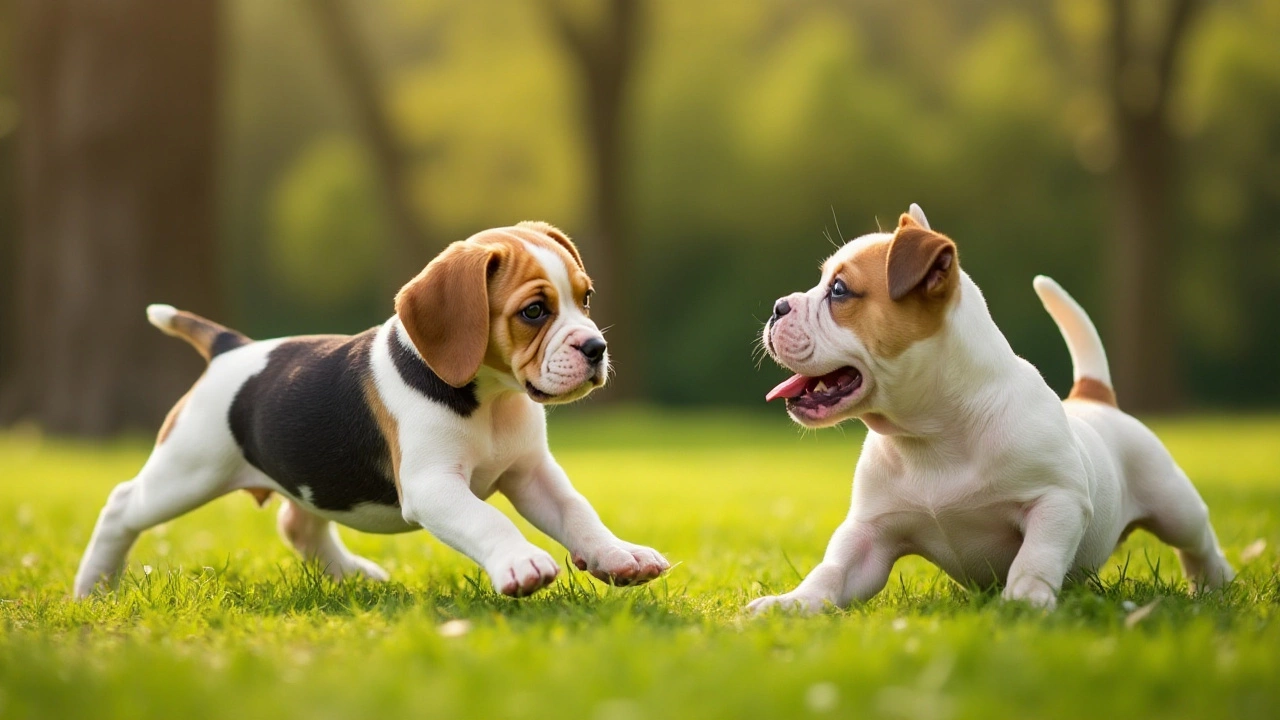
Behavioral Changes
Puppies, much like young children, go through distinct developmental stages, each ushering in new challenges and triumphs. Around the halfway mark in their first year, generally between six to twelve months, significant behavioral changes begin to emerge. At this point, many puppies start transitioning away from their boundless exuberance, not necessarily becoming less energetic, but learning where and how to direct that energy more appropriately. This pivotal period marks the growing influence of their formative training and the behaviors they’ve learned up until now. Their need for active supervision gradually lessens, though this varies from breed to breed.
During this stage, puppies begin to better comprehend the rules around them. They start responding more consistently to commands and, with the right incentives, even from the most irresistible distractions. This improved understanding doesn’t occur overnight, however, and maintaining patience and persistence in training is essential. The earlier foundation laid in teaching basic behaviors can significantly smooth this transition, as they start to internalize cues and expectations. It's a time that's both rewarding and challenging because, combined with their growing comprehension, there's always a possibility for testing boundaries as they explore the chain of command within their social structures.
Behavioral adjustments also include shifts in how they play and interact with humans and other dogs. Playtime might evolve from chaotic bursts of activity to more interactive and even strategic types, as mental stimulation becomes equally satisfying. They may also demonstrate the beginning of what appears as loyalty, often observing their favorite human’s cues to determine the appropriateness of their actions. Interestingly, some studies suggest that dogs might have a sense of fairness and jealousy. As per insights shared by psychologists, dogs’ reactions during interactions, such as exhibiting jealousy when they feel another dog is getting more attention, are now beginning to be understood more deeply, complicating previously held notions about dog cognition.
The quest for independence often accompanies these behavioral changes, as puppies explore their environment more confidently. House training becomes increasingly easier as they develop better bladder control. Feeding times and sleep schedules may stabilize, contributing to a more predictable routine. Despite these positive changes, some new hurdles, such as stubbornness or development of fears, may surface, echoing adolescence in humans.
"As puppies mature, they will start to explore the world independently but will still rely on guidance from their humans, establishing who is the leader of the pack can be crucial during this stage," advises Dr. Heather Loenser, a renowned veterinarian contributor.
Engaging puppy toys play a crucial role during these changes. The right toys can help balance their energy levels and focus their growing curiosity and intelligence in safe ways. Ranging from puzzle toys that challenge their problem-solving skills to chew toys that cater to their instinctual needs, offering them a selection that keeps them mentally and physically stimulated is essential. Additionally, these toys serve as practical aids, encouraging useful behaviors and providing them with much-needed comfort where adjustment to new routines is concerned.
Choosing the Right Toys
Puppies are brimming with energy and curiosity, and choosing the right puppy toys is crucial not just to keep them entertained but also to support their development. The right toys can help satiate their natural instincts, from chewing to chasing, and can significantly aid in training and behavior management. As much as we adore watching them play, toys serve a purpose beyond fun; they are tools to guide their growth and accommodate their endless bursts of energy.
When selecting puppy toys, a key consideration is the material and durability. Puppies are known for their teething phase, which can see them chewing through just about anything. Opt for toys made from robust materials that can withstand sharp little teeth. Rubber toys often come recommended, as they can be quite resilient and are easy to clean. Interactive toys that dispense treats can keep a young pup engaged for hours, offering both mental stimulation and a reward system that encourages positive behavior.
“A toy that encourages interaction not only keeps your puppy physically active but also mentally stimulated, which is crucial for their overall development,” says Dr. Emily Harris, a leading canine behaviorist.
Puppy calming is another aspect that toys can help with. Toys that mimic natural prey, like those with squeakers or that are plush and chewable, satisfy a puppy’s hunting instincts, providing an outlet for pent-up energy in a constructive way. Puzzle toys challenge a puppy’s mind, requiring them to solve a problem to receive a reward. These can be excellent for high-energy breeds, channeling energy into focus and distraction. In addition, toys that provide comfort can be beneficial for anxious puppies, especially those still adjusting to new environments.
Considering the specific needs of your breed is also essential. While some puppies might benefit from plush toys that they can cuddle with or carry around, others might require sturdier options that stand up to more aggressive play. Always supervise playtime, especially when introducing a new toy, to ensure it's suitable and safe. Investing in a small variety of toys will allow you to observe which types your puppy responds to best, giving you insights into their preferences and behaviors.
Lastly, regular toy rotation can prevent boredom. Just like toddlers with their toys, puppies can lose interest if they continuously play with the same ones. By rotating toys every few days, you can maintain their enthusiasm and provide fresh stimulation. And who knows? That old toy they’ve ignored for weeks might suddenly become their new favorite. Above all, choose toys that not only entertain but educate and comfort your puppy, setting them up for a more harmonious and calm existence as they grow older.
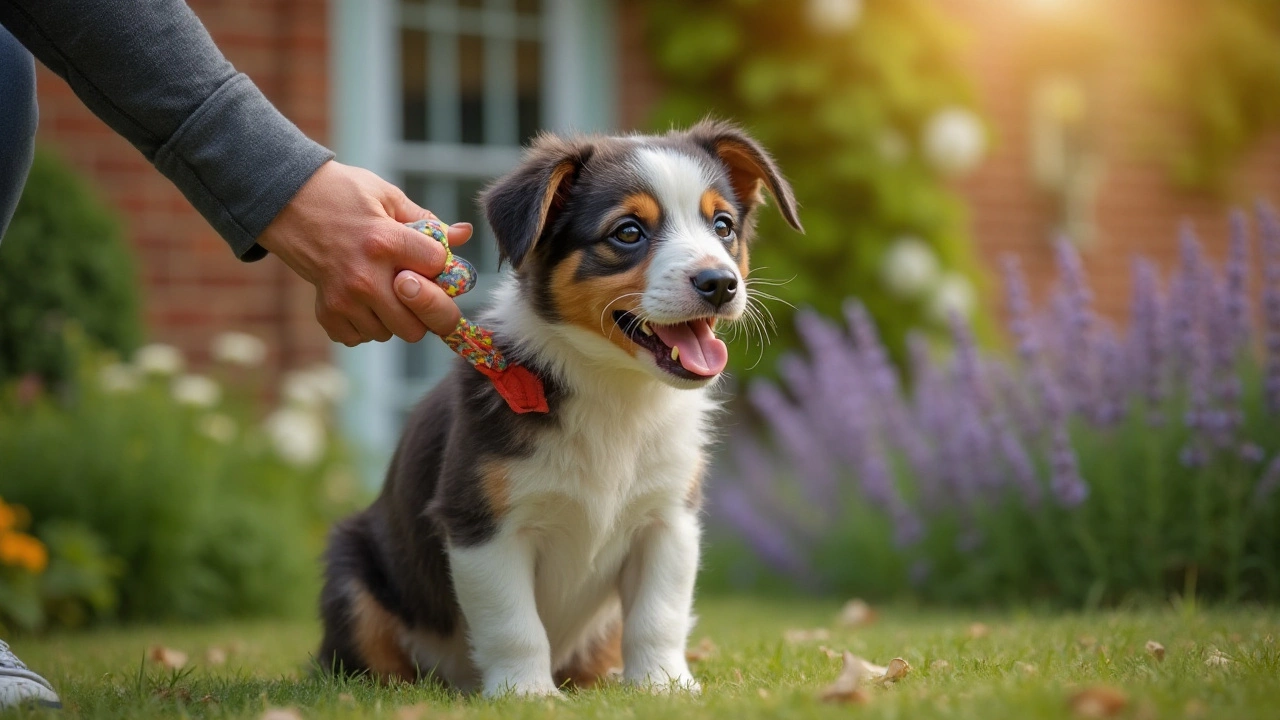
Training Techniques
Training your puppy can be one of the most rewarding aspects of welcoming a new furry friend into your home. Yet, it’s a task that requires patience, consistency, and the right techniques. Understanding the world through your puppy's eyes is the first step—these little creatures are brimming with curiosity and a desire to learn just about everything in their surroundings. To tap into this, you need to create a strong foundation with familiar cues and routines. Repetition is key to reinforcing good behavior, and praising them with treats and attention when they successfully follow a command is crucial to their learning process.
When you begin with puppy behavior training, start with basic commands such as 'sit,' 'stay,' and 'come.' These commands form the bedrock of your puppy's etiquette. A quiet environment will help them focus, and as they become more proficient, you can gradually introduce more distractions. Remember, the goal isn’t just to teach commands, but to nurture a bond of understanding between you and your pup. Professional trainers often recommend the 5:1 method, which suggests five positive reinforcements for every correction. It's about making the learning process enjoyable rather than punitive.
"The best trainers are not the ones who show their dominance, but those who show their animals kindness." - Dr. Patricia McConnell, renowned animal behaviorist
Not all training has to happen indoors, nor should it. Taking your puppy outside introduces them to different experiences and stimuli, which are invaluable in helping them grow accustomed to the world beyond your home. Outdoor training can build on obedience skills while also honing leash behaviors. Many suggest that start outdoor training as soon as your puppy is old enough and has completed preliminary vaccinations. Gradual exposure to different environments teaches them adaptability and can reduce future anxiety or fear responses.
Using appropriate dog training toys can bring a new dimension to your routines. Toys like puzzles are fantastic not only for their entertainment value but also for mental stimulation. They encourage problem-solving and can be used as physical incentives for tasks completed. Some toys even allow for treat storage, which can be a delightful reward for a puppy who has learned to associate that activity with good behavior. Consider incorporating an occasional ‘obstacle course’ in your home or yard using household objects to challenge their intelligence and physical abilities.
Group classes can be another beneficial tool in your training toolkit. They provide an opportunity for socialization with other dogs and people, which is crucial for well-rounded puppy behavior. It's important to find a reputable class that focuses not only on obedience but also on building a positive and constructive relationship with your pup. Check resources like the Association of Pet Dog Trainers for accredited professionals in your area. Puppies, much like children, thrive in environments where they feel secure, understood, and engaged.
Creating a Calming Environment
Transforming your home into a haven of tranquility for your new puppy can make a world of difference. An energized puppy benefits tremendously from an environment that is thoughtfully designed to promote calmness. It starts with understanding their needs and preferences, which often include safety, comfort, and a sense of security. Consider dedicating a specific area of your home solely for your puppy. This safe zone should be free from hazards with plenty of space for your puppy to move yet cozy enough to feel secure. Soft bedding can add comfort while minimizing external noises with soundproofing techniques can help create a peaceful retreat.
Lighting plays a crucial role in setting the right mood. Natural light can work wonders during the day, but it's equally important to have a dimmer setting for the evening. This mimics the transition from day to night in the wild and signals to your puppy that it's time to wind down. Aromatherapy may seem unorthodox, but certain scents, like lavender, can create soothing effects for dogs, just like they do for humans. Adding a drop of essential oil on their bedding or around their special space could facilitate relaxation.
The power of background music shouldn't be underestimated either. According to a study by the Scottish SPCA and the University of Glasgow, dogs respond positively to reggae and soft rock, showing lower stress levels as a result. Having a playlist with calming tunes might just keep the energy levels in check. This environment isn't only about physical aspects, but includes emotional factors too. Puppies feel the energies and emotions of their owners. As an owner, demonstrating calm behavior and using a quiet, reassuring voice can aid in creating that environment of serenity.
Engaging your puppy’s sense of curiosity with the right puppy toys is essential, too. This doesn’t necessarily mean anything fancy; sometimes a simple, well-loved toy with the right balance of softness and texture can help calm a restless puppy. Choose toys that cater to their natural instincts – chasing, fetching, and chewing. By channeling their energy into these calming activities, you're allowing their natural behaviors to be expressed in a constructive way.
“Pets improve our mood, relax us, and help manage stress. When you are dealing with a hyper puppy, patience and a calm environment are both crucial in helping them learn the appropriate behavior.” — American Kennel Club
While adjusting the environment, be mindful of the temperature as well. Puppies are sensitive to extreme temperatures, just like humans. Ensuring a consistent, comfortable climate helps in maintaining their well-being. Employing these strategies collectively contributes to a nurturing environment that promotes a calm and balanced puppy, giving you more time to savor those delightful moments of puppyhood.

